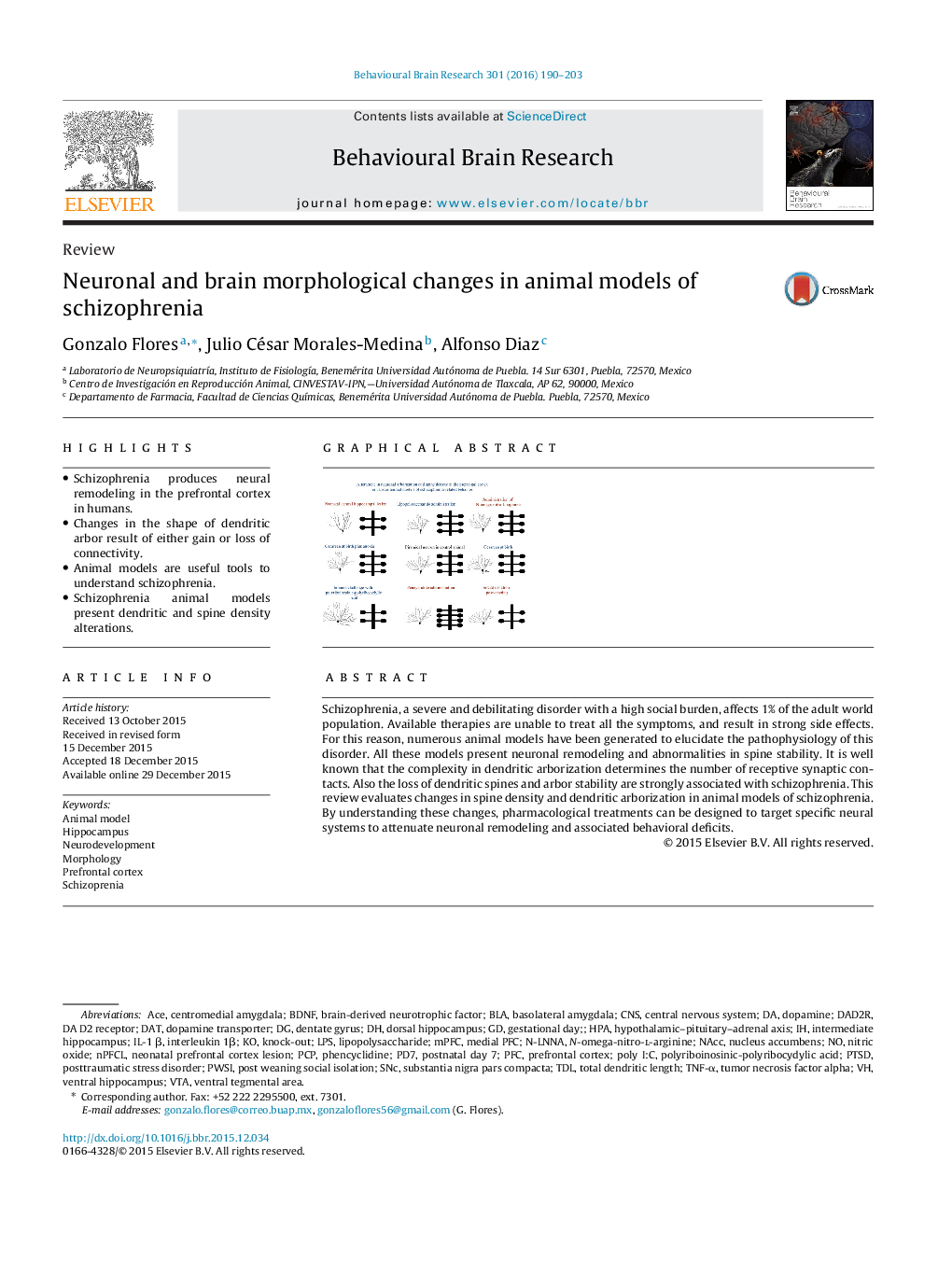| Article ID | Journal | Published Year | Pages | File Type |
|---|---|---|---|---|
| 4312279 | Behavioural Brain Research | 2016 | 14 Pages |
•Schizophrenia produces neural remodeling in the prefrontal cortex in humans.•Changes in the shape of dendritic arbor result of either gain or loss of connectivity.•Animal models are useful tools to understand schizophrenia.•Schizophrenia animal models present dendritic and spine density alterations.
Schizophrenia, a severe and debilitating disorder with a high social burden, affects 1% of the adult world population. Available therapies are unable to treat all the symptoms, and result in strong side effects. For this reason, numerous animal models have been generated to elucidate the pathophysiology of this disorder. All these models present neuronal remodeling and abnormalities in spine stability. It is well known that the complexity in dendritic arborization determines the number of receptive synaptic contacts. Also the loss of dendritic spines and arbor stability are strongly associated with schizophrenia. This review evaluates changes in spine density and dendritic arborization in animal models of schizophrenia. By understanding these changes, pharmacological treatments can be designed to target specific neural systems to attenuate neuronal remodeling and associated behavioral deficits.
Graphical abstractFigure optionsDownload full-size imageDownload high-quality image (158 K)Download as PowerPoint slide
